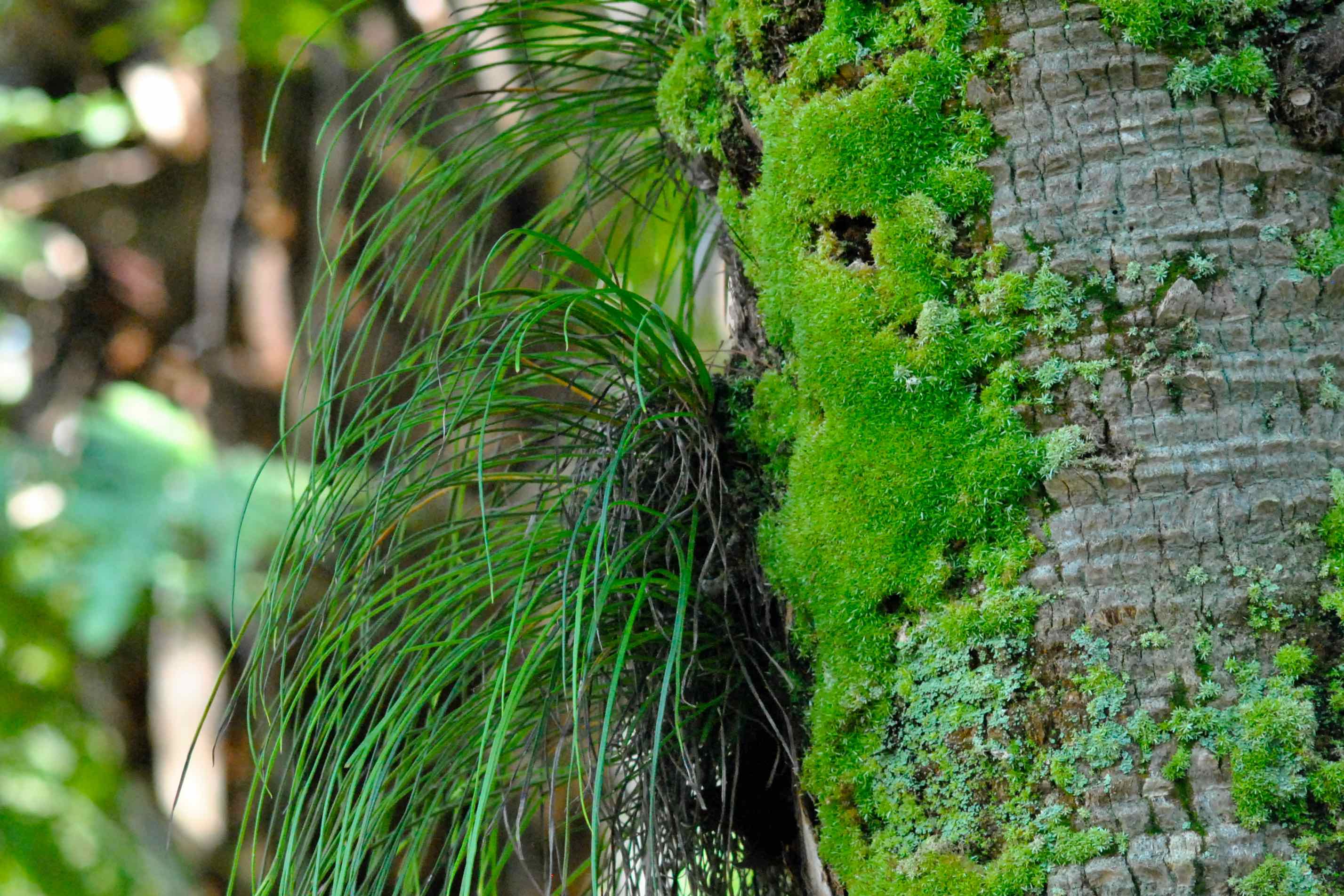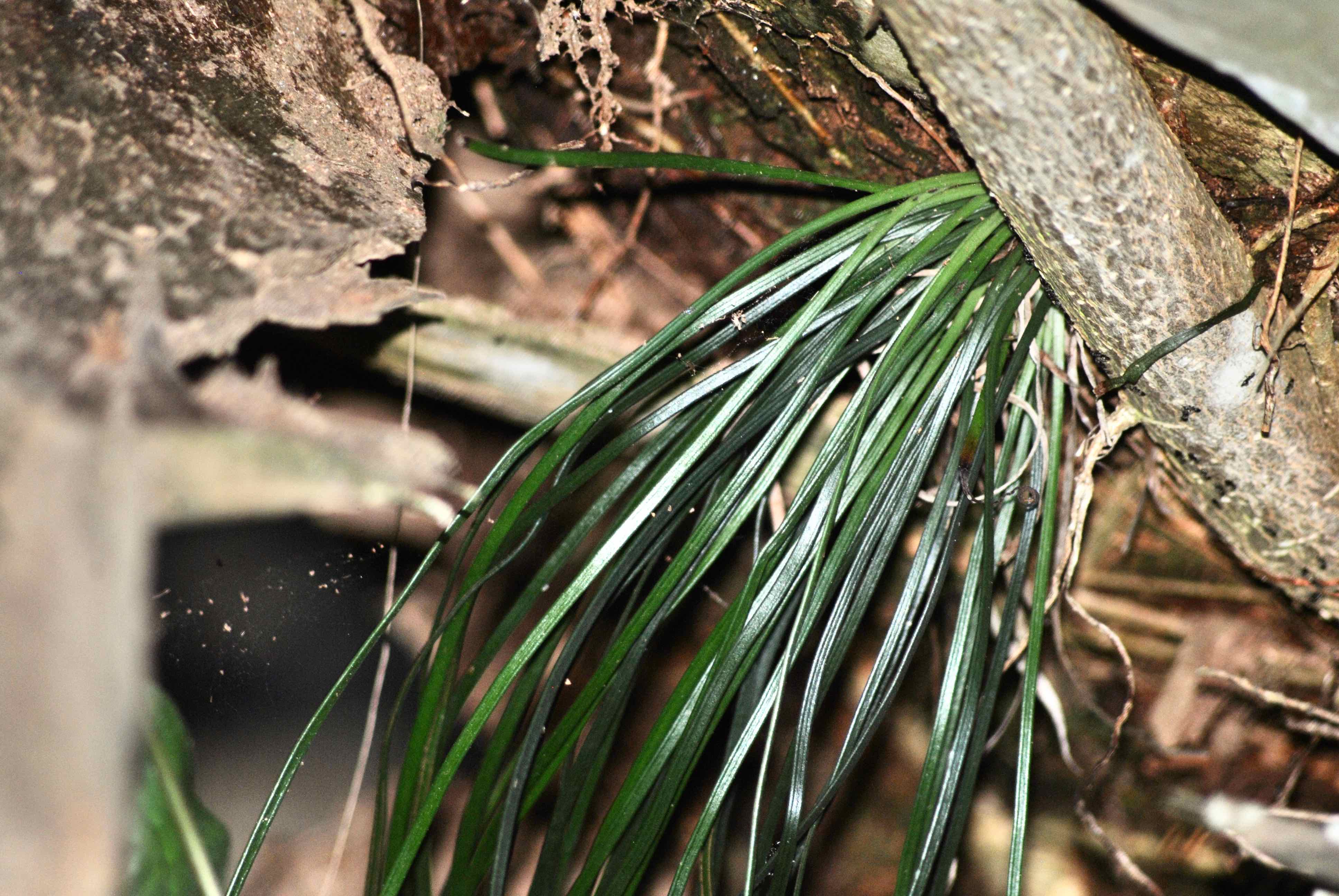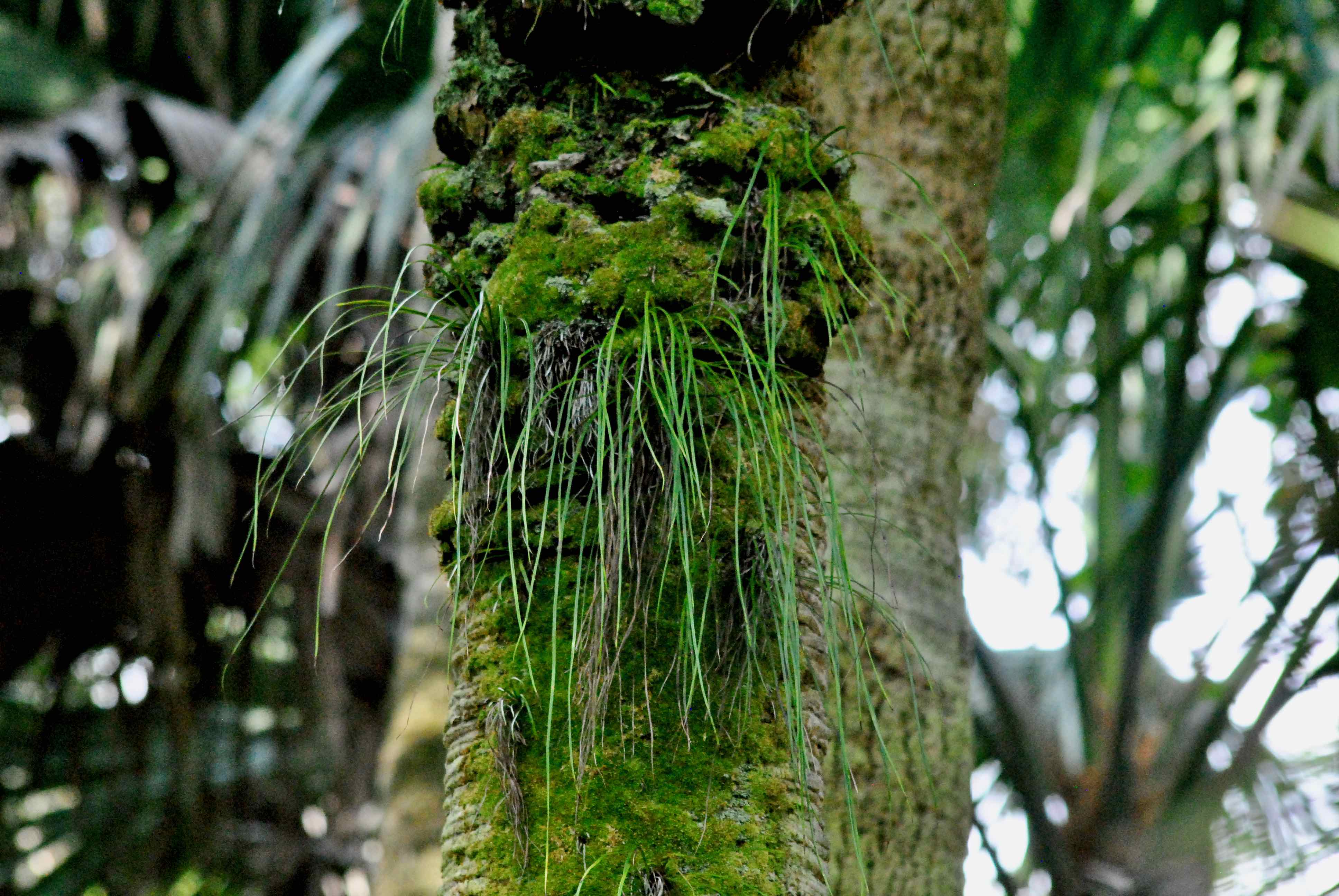
Shoestring fern, photographed at Rookery Bay National Estuarine Research Reserve, Naples, Collier County, in February 2020.
First time you see shoestring fern, Vittaria lineata, you think you're looking at the world sideways. It looks like a clump of lush grass growing on the side of a tree. But those blades of grass are actually fronds.
Shoestring fern is an epiphyte, meaning it gets moisture and nutrients from the air. It requires a host plant for structure, but it is not a parasite. It usually grows in the boot of a sabal palm or a fork of a tree, although we've found them growing on the base of tree.
It is a Florida native found throughout most of Florida's peninsula. The only other place it's found in the continental United States is Camden County, Georgia, along the Peach State's southeastern coast. But it's also native to parts of the Caribbean, Mexico, Central America and South America. We've found references to it growing in China and South Africa, most likely naturalized.
Its preferred habitat is moist woods; palms, as noted, are a favorite place to grow, although it will find a home on other trees as well. The fronds are dark green, narrow and long, as long as a foot-and-a-half or more. The undersides have two groove-like strips where spores form. Shoestring fern grows in light to moderate shade; it does not tolerate drought well. According to the Institute for Regional Conservation, shoestring fern is cultivated; it's used mainly in restorations and natural landscapes. Like all ferns, it reproduces by spores rather than through flowers and seeds.
The Seminoles used shoestring fern, as they did other ferns, to treat a variety of mental health conditions, including senility and depression. According to Florida Ethnobotany by Daniel Austin, the Seminoles would boil shoestring fern, then have the afflicted person drink the concoction. They'd also use it in a steam bath for the same purpose.
The Seminoles also used the leaves of shoestring fern to make a pediatric aid for chronically ill babies, and in birth ceremonies. A bit to the south, the Guaymi people of Panama used shoestring fern to make a headache remedy.
This plant has a cousin called Appalachian shoestring fern, Vittaria appalachiana, which is found in most of the eastern United States as far north as New York, but not in Florida.
The photos of the plants on this page were taken at Yamato Scrub Natural Area and at Green Cay Nature Center in Boyton Beach.
Shoestring fern is a member of Vittariaceae, a family of epiphyte ferns found around the world. Other common names for shoestring fern include ribbon fern, beard fern and grass fern. Apparently, we're not the only one who thinks it looks like something that should be growing in your lawn.
Click on photo for larger image
Links for Shoestring Fern



